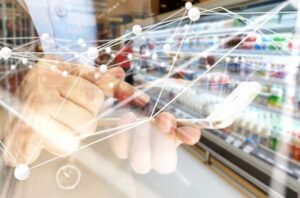
Interview Originally Published in Progressive Grocer in December, 2021
Retail personalization makes shoppers 110% more likely to buy unplanned items and 40% more likely to exceed their planned budget, according to Boston Consulting Group. But how does this translate to grocery? How is “grocery personalization” different from general retail? And what does great grocery personalization look like?
QUESTION: How do you think most retailers and providers promote “personalization”?
ANSWER: “Personalization” is often sold as a feature that you load up with personally identifying information in order to segment shoppers into large persona groups. Recommending Axe body wash to men, for instance, is a type of personalization that uses correlation averaging, and frequently shows up as “people like you bought” type of algorithms. This is not true 1:1 personalization and it will never deliver the results that grocers need.
Q: How do you define personalization?
A: True personalization requires predicting shopper intent based on everything you know about that individual customer and the products they love, or will love. That means giving the shopper an experience that is tailored to their personal preferences at the moment of decision. Great grocery personalization shows the shopper it knows why they are interested in a particular item and how they plan to use it. The next recommendation is then informed by what is highly relevant to that shopper, at that moment. To get to that level of personalization, grocers not only need a deep understanding of each shopper, but more importantly, a true understanding of every grocery product and their unique qualities. That knowledge is what we call “Taste Intelligence,” our human preference engine built specifically for grocery. That’s how we make recommendations, substitutions and search results that make sense on a human level.
Q: Why build a human preference engine just for grocery?
A: Grocery is radically different from any other industry. Standard retail personalization engines don’t understand the complexities of human food preferences. We wanted to build an engine that could make accurate, sales-generating, and split-second decisions at the moment that a shopper is filling up their cart.
Q: How does this play out for the customer?
A: Taste Intelligence is trained on billions of food items, recipes, flavor combinations, restaurant dishes, and grocery decisions. It understands what food items are, how they are used together, and how they relate to individual human preferences. With Halla, if a lactose-intolerant customer searches for butter, for example, the first search result will be a dairy-free butter, not butter that is popular with other shoppers. If that item has to be substituted, the replacement will also be customer-relevant, and if the shopper puts macaroni in their cart, they might be recommended dairy-free cheese and milk at checkout. That’s how smart Taste Intelligence is. This happens millions of times, down to the unique customer ID, in real time, in a grocery-specific and enterprise-ready context. Anything short of this doesn’t count as personalization.
Q: What advice do you have for grocers who are considering how to begin or improve their personalization?
A: Don’t wait! In the next year, the quality of the personalized grocery shopping experience will separate winners from losers. It will create a gap that will widen over time and make it very difficult for grocers to catch up.
Don’t look at personalization as a cost item, look at it as the center of your customer centric strategy to drive profitability across your digital channels. Set a very high bar. Be skeptical and ask technology vendors to explain what goes into the secret sauce.
Grocers should seek out personalization designed exclusively for grocery that functions on a 1:1 basis. Personalization technology must work in real-time. To Halla, “real-time” means “in-the-immediate moment,” meaning if the shopper adds an item to the cart, the recommendations instantly change based on this new information. No batch processing or overnight data science. It must happen in “real-time.” To some providers “real-time” might mean that they pre-cache recommendations and refresh them in the middle of the night. If you ask me, that is not real-time technology. Shoppers want you to predict what they need now, based on what they’re doing in their current session. In the future, that type of attention to customer experience will pay off in increased loyalty and profitability. Great grocery personalization makes customers feel like the store was built just for them. It improves customer experience, and therefore loyalty, and with Halla it also results in 5-15% uplift in basket size.

